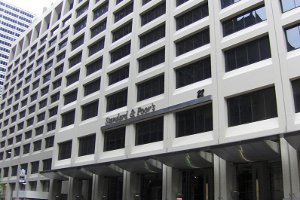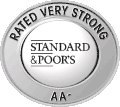Reform of rating agencies
Rating agencies under scrutiny
 Standard & Poor’s headquarters in New York © B64 (modified picture), CC BY 3.0 Standard & Poor’s headquarters in New York © B64 (modified picture), CC BY 3.0 |
On November 5, 2012, a federal Australian court brought charges of deceitful ratings, misrepresentations and publishing inaccurate information against Standard & Poor’s.
The agency was compelled to compensate 13 local communities for having assigned the highest score to financial products that turned out to be toxic during the 2008 crisis. Reparation, including net losses and damages, is estimated at 30 million USD. It is the first time that the third party liability of a rating agency is engaged.
Moreover, in Netherlands, European investors have filed a lawsuit against S&P. Another trial is about to start in Italy against seven officers and analysts (five of whom from S & P and two from Fitch Rating) for unfounded judgments having had a negative impact on the markets.
Leaders from both agencies face up to three years of prison for having downgraded Italy’s rating for speculative purposes. According to a consumers association, damages are likely to amount to 120 billion EUR (158 billion USD).
In the United States, where the procedure is more complicated, no lawsuit against a rating agency has so far been successful. American jurisprudence, however, could evolve and become more constraining for agencies. The American stock market regulator, the Securities and Exchange Commission (SEC) has been conducting a survey since 2011 on the conditions surrounding the award, in 2007, of the triple A rating to toxic securities.

In Europe, since the Australian lawsuit lodged against Standard & Poor’s, lawyers are studying the possibility of launching collective proceedings against the agency. In addition, the European Securities and Markets Authority (ESMA) has just initiated an investigation into the methods used by the three agencies to assess banking risks.
Faced with these judicial setbacks, rating agencies which were formerly characterized as untouchable and as market policemen see their status shaken. Their future looks pretty worrying, especially if they are required to answer for their misdiagnosis and face the payment of exorbitant fines.
What agencies are blamed for
The loss of credibility of the agencies is accounted for by a series of negligence acts committed in recent years.
- The lack of foresight: agencies did not see the collapse of Enron coming in 2001, the American energy giant, nor did they predict the collapse of the Italian food group Parmalat in 2003. Similarly, the multinational bank Lehman Brothers had been awarded the triple A rating on the eve of its bankruptcy on September 15, 2008.
- The overvaluation of some risky assets and the granting of a triple A rating to some toxic products, which sparked off the subprime crisis in 2008.
- The hasty rating downgrade of some countries in difficulty. This practice has increased the panic on the financial markets. Italy and Greece, whose ratings were lowered by nine notches by Moody's in fifteen months, are the best examples.
- Conflicts of interest: some agencies are directly remunerated by their clients. This is the case of Moody's which is in charge of auditing Berkshire Hathaway, third global reinsurance group, while the latter has more than 10% in the agency’s capital.
Other complaints are made against agencies such as:
- the slowness of analyses
- insufficient human resources, quality and quantity wise
- hardly professional working methods
- lack of transparency and rigor
The new Brussels regulations
 Bank run outside a branch of Northern Rock, Sept. 2007 © Lee Jordan (modified picture), CC BY-SA 2.0 Bank run outside a branch of Northern Rock, Sept. 2007 © Lee Jordan (modified picture), CC BY-SA 2.0 |
To cope with these abuses and deficiencies, regulatory bodies in Brussels representing 27 member States have agreed on 27 November 2012 on a new directive designed to regulate the activity of rating agencies in Europe. The new requirements are meant to reduce the influence of these agencies on the financial markets and limit the snowball effect induced by the downgrade of a country’s sovereign rating.
Among the measures enacted to regulate the activity of agencies, we note:
- the clearance, by 2020, of the European regulatory texts from any reference to ratings.
- the harmonization at the European level, of third party liability schemes for negligence or gross misconduct. A measure that will allow investors, who have suffered damage, to claim compensation or even damages.
- the requirement of a timetable regarding the publication of sovereign ratings for the member States of the Union. The bill also stipulates that agencies may modify the unsolicited ratings of any State no more than three times per year and at specific dates.
- the announcement of a sovereign rating, will henceforth be made an hour prior to the opening or one hour after the closing of the Union’s financial markets, a measure designed to avoid investor panic.
- strengthening transparency requirements for research methods and risk assessment.
- the application of rotation principle. States and companies are required to have a different rating agency every three years. This measure has been considered only for some complex financial products.
- the establishment of new competitive rating systems such as the development of "scoring", a system of internal control specific to banks and insurance companies.
- the establishment by 2016 of a public rating agency for the euro area.
- combating conflicts of interest. Investors’ participation in the capital of two different agencies is ceiled to 5%. Similarly, an agency can no longer rate an entity which owns over 10% of its capital.